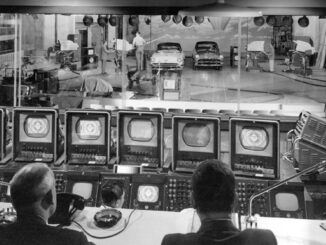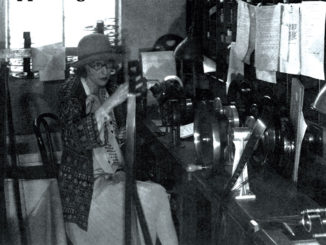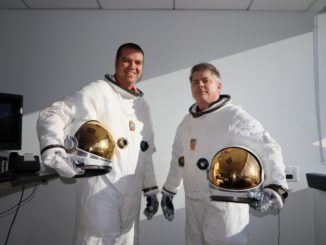
by Rob Feld
To be birthed from the world of director Robert Altman and his legendary editor Geraldine Peroni, ACE, is a unique experience for a young editor. Such was the gestation period as an apprentice editor for Dylan Tichenor, ACE — an environment of multi-character storytelling, which lent itself well to his own sensibilities and would apply to much of his future work.
Tichenor came to edit some of the more notable work of a who’s who of directors with starkly identifiable styles, like Paul Thomas Anderson, Wes Anderson, Kathryn Bigelow, Mike Figgis, Ang Lee and M. Night Shyamalan. He recently completed his second film for John Hillcoat: Triple 9, which opens February 26 through Open Road Films.
The film is a dark noir, which follows the storylines of an Orthodox Jewish Russian mafiosa (Kate Winslet) who runs her bloody operation out of a kosher butcher shop; a cop (Chiwetel Ejiofo) who is part of a murderous ring of corrupt police officers and has a child with Winslet’s character’s sister; a tough, incorruptible rookie to the group (Casey Affleck); and his cynical cop uncle (Woody Harrelson). There’s a lot to track, a less-than- visual MacGuffin, and a challenging rhythm to maintain between explosive action and expository dialogue. It’s obvious why Tichenor would be a good choice for the job.
CineMontage: Your background is a rare one, beginning under Geraldine Peroni for Robert Altman. What did you take from that experience?
Dylan Tichenor: I remember early on getting her approach to performances. It was a wonderful environment and I was fortunate to have fallen in with them. Gerri cut from her gut: “What’s my emotional reaction to this moment from this person?” And I naturally understood why she picked moments she did. We both looked for the extra moments that were not necessarily present, but that could reveal a little more depth and add some contrast or other harmonic of emotion to the scene. Those things can create a more interesting depth and tension. Maybe it’s something I got from her.
Gerri was working on Brokeback Mountain when she passed away, and Ang Lee asked me to take that over. I didn’t want to do it because it felt really emotionally charged. I didn’t know how to deal with it. Ang was very open about it and said, “You should come try it. At a certain point, it’s just going to be about the work.” Truthfully, it turned out to be the best way to spend time with Gerri — thinking about her life and personality. In a funny way, we were working together. It was very rewarding and I never would have expected it would be anything other than a painful thing to do. It was also quite comforting and educational. The work turned out well [it earned him ACE Eddie and BAFTA Awards nominations] and it was a good feeling.
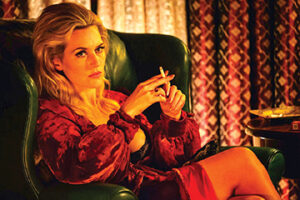
CM: Keeping emotionally open to the footage you watch over and over again, do you try to make intuitive, quicker decisions before the feeling dulls with redundancy?
DT: I try to identify those moments that I respond to when I’m watching dailies early on, and make a lot of notes that are very specific. Then I try to remember that feeling I had when I refer to them because, after you put it together, you’re trying to make the rhythm of things work.
At that point, the storytelling has to become lean and effective, and a lot of those moments that were intriguing have no place in the scene anymore. So I try to start with them and keep them if I can. Usually the feeling remains; it’s just that you’ve become a little more inured to it because it’s boiled down to the more mechanical aspects after you’ve gone through it a few times. You have to try and trick yourself into seeing it for the first time every time you see it. But you also have to trust that you’ve done the process in such a way that you’re retaining as much of those interesting bits as you can.
CM: Can you differentiate the sort of footage you get from Kathryn Bigelow, Paul Anderson, Ang Lee and Wes Anderson?
DT: With those four directors, I could almost assuredly pick out a shot in dailies from each of them. Kathryn’s Zero Dark Thirty was a tremendous amount of footage, shot multi- camera, all of it documentary vérité style. There were fewer planned shots with beginnings, middles and ends of things. It was more a collection of documents of the moment.
Wes would probably be on the other end of that spectrum. He is very clear and purposeful in his shot gathering. He probably storyboards more than anybody.
Back in the day, Paul used to be more scripted, more pointed in his shot construction and scene storytelling. And I think that he has become more open and artistically freer as he’s become more and more comfortable with the art of filmmaking. He knows how he wants it to feel, he knows the ingredients he is going to use, but he’s very free to go with the flow, and mix and match.
I made one movie with Ang and my feeling is that he’s a master storyteller. He once asked me why I hadn’t used a certain way of cutting something, and I said, “Well, I didn’t want to be too obvious.” He said, “Don’t be afraid to be obvious. If the story is good, and if what you’re trying to do is strong, there’s no reason not to be obvious. Just tell the story directly.” I got what he was saying, and he was very right about that particular thing. I had outsmarted myself, second-guessing what I was trying to do. But his point has really stuck with me. Directors, actors, writers — all of us in our different disciplines — try to jump through hoops to not do the thing that is expected, but you can also wind up trying to sidestep the fact that maybe there isn’t a new idea there.
CM: Like many of your projects dating back to your Altman days, Triple 9 is a film with many storylines and characters. Is that something that you enjoy juggling?
DT: Yes, I constantly do that. Like almost all films, and some more than others, there was a lot of rearranging and rebalancing. How much of this storyline do we need? Do these beats need to be connected together, or do we intercut them with beats from other threads? How do we achieve a synthesis, a resonance between the stories, and have them flow together in a revealing way that maintains and builds tension?
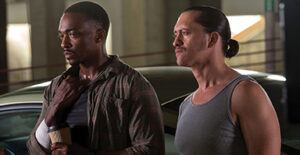
I do respond to those sorts of stories; certainly working with Altman, that was the norm. Also, I come from a family with a lot of people and had lived in some communal living situations when I was a kid, so maybe I have an affinity for having lots of people around.
CM: What are some of the difficulties in editing these type of stories?
DT: There are particular challenges and pitfalls with multi-character stories. You can cut away and achieve some measure of release and contrast by going to another story, and that can elevate both stories by showing similarities and differences between moments, characters and situations.
But it can also just become a bowl of spaghetti, where you have a bunch of threads that aren’t necessarily relating very well, and you’ve got to get from the beginning to the end of each one. They may cross-cut around, but it isn’t necessarily achieving any magic. That said, I enjoy a pretty straightforward, more single- or dual- character type of story, as well. I don’t think I particularly go for multi-character projects in a conscious way.
CM: What was the greatest challenge of Triple 9?
DT: Letting the audience know who the main character was. It’s a very difficult thing in multi-character stories. In this one, we are introduced to Chiwetel Ejiofor, then Casey Affleck, then Woody Harrelson. There are other people involved but those are our three main characters. Their fates are obviously going to intertwine and we’re going to pace out how we’re going to give you information about each one.
What you want to do is set up questions and intrigue for the audience. Then you want to answer them and weave a story that way. That was certainly a challenge in Triple 9. I also think the balance of action and dialogue was a challenge. This has a go pace, then a slower pace; go pace then slower pace. Trying to manage that overall balance was a challenge, but I think managing the information was the most difficult on this — confusion over what this “box” is they’re trying to steal, why they want it and who wants them to get it. Sometimes in movies, you have a lack of character motivation, where you don’t understand at all why a character needs to do what we’re saying they need to do.

CM: How did you solve that problem?
DT: Often I’ve run across this on other projects, and it happened in Triple 9. In an attempt to solve that problem, you ask, “What is motivating our main character to do A, B or C?” The writers come up with several answers and they all go in the film. And this becomes equally problematic: He’s doing it for the money and also doing it for his son, and then he’s doing it because they threatened to kill him, and then he’s doing it because… And you sort of go, “Well, what is it? Because now I’m not sure what to care about or how to look at this.” That became an issue for a few characters in the movie. We tried to make sure we were clearly asking ourselves, “What are the stakes? Why do people care about what they care about?” and “How is it going to intertwine with other people?”
CM: Do you think a lesson for writers then is to really choose one thing and let that be it?
DT: I think that is a lesson. This relates a little bit to what Ang Lee was saying: “Don’t be afraid to be obvious.” What that can also mean is, “Be clear.” A character can certainly have more than one motivation. Often the way it works is that a smaller motivation leads to a big motivation, leads to a bigger motivation; as stakes ramp up, things become important on different levels. That can work effectively. Also, there can be a main motivation and then corollary feelings about things that contribute to the same desire.
But if you have story threads and beats that say, “He’s doing it because of this. And then, well, he’s also doing it because of this other thing. And in case you are wondering why he’s doing it, he’s also doing it because of this…” That’s when it becomes a problem, when we just sort of seem to be piling on. So you want to be clear, and it takes experience and a little bit of trial and error. The process of editing is a lot like the process of writing, where you sometimes just have to put the thing together and feel it out and say, “What does this make me think? Does this work properly this way? No, it doesn’t, let’s rework that.” That happens in editing quite a bit, where you are rebalancing what the forces of drama are in the scenes and arcs.
CM: What sort of footage did you get from Hillcoat? Is it pretty malleable material?
DT: Quite malleable. With most people these days, especially shooting with Alexa, there’s a lot more footage. Material is gathered and then put together in the cutting room. In assembly, I will pick what I think the best, most interesting bits are, and will see how much of that sticks to the end — usually a good bit of it. I think John did a great job with Triple 9 by blending drama and action. I think there’s some fun action, but also some compelling drama — and even some comedy. It’s not a blend you often get.
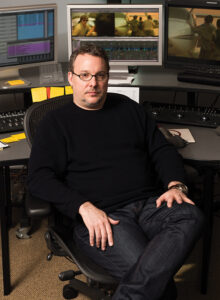
CM: How do you feel about the increasing tendency for directors to shoot so much footage and just send it to editorial?
DT: My experience is that increasingly, decisions are being made more in the cutting room and less on the set. It costs no more money now to shoot 20 minutes of something than it does to shoot two minutes of something. I think we get a lot more unscripted and vérité moments in all sorts of movies. I’ve had so much footage on some of these projects that it can be overwhelming. It’s exciting to have that many options but it’s also, “Well, we have this many options…”
It really makes the dailies process and choosing things from the beginning quite important, because you can’t replace everything all the time, and you have to start somewhere. It’s your sensibility and your state of mind that are going to dictate how the scene first turns out. And in a lot of cases, that will largely be the shape of it in the end. It’s great that those of us in editorial have such a say in the storytelling. What I’m noticing, though, is maybe a homogenization of styles, where many projects are tending to the hand-held, roving, medium shot as coverage for a lot of things. Whereas 15 or 20 years ago, there would be more deliberate decisions made. I think now you can gather much more material in the same amount of time, so that gives many more options, flavors and colors. And we sort it out later, theoretically spending more time in the cutting room.
CM: That was my next question; are you getting more time to figure it out?
DT: No! You tell people, “Look, there’s so much footage. It just takes a while to go through and understand, and I want to make good decisions from the beginning.” They nod and go, “Of course, of course,” but I don’t think they really understand how, from my perspective, the craft or process has changed. It’s exciting and great to have such possibilities given to you, but it’s especially great when you feel the freedom to make the best thing out of that. You’re less locked into things, but at the same time you are responsible for more of the decision-making. It’s a trade-off, but I’m up for it!



